The first page opened with an article titled "THE INDIAN TRAINING SCHOOL," that described the progress of the school, its Christian methods, the work of the former Ft. Marion prisoners of war preparing buildings for use, the importance of the town Sunday Schools, the school curriculum that emphasized farmwork for boys and housekeeping for girls…
Eadle Keatah Toh (1879-82)
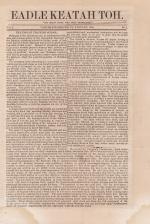
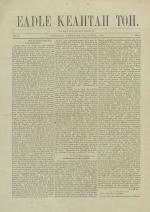
Page one opened with a teacher identified as A.J.S. (Alfred J. Standing) reminiscing about his time teaching Native Americans before he came to Carlisle. Also on the page was an article signed by "G. Le R. B." (George Le Roy Brown) on the civilization of the Indians, comparing it to the conquests of the Roman Empire and its assimilation of less…
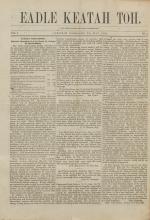
Page one opened with information, including statistics, from the Annual Report of the Commissioner of Indian Affairs about Carlisle and other schools as reported by Indian agents. Page two contains more arguments for, and accounts of support for, educating Indian youth. The article "Our Dining Hall" describes the physical space, the work the…
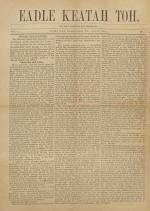
Page one had an article on the benefits all children of the Sioux Nation receive from the agency, and how adult should have the opportunity to learn English as well. There was statistics on the number of children attending, and the ratio of boys to girls. Page two had a piece about the student’s reaction to a camping trip. Many of them reacted…
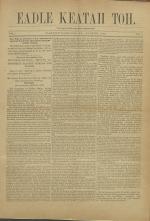
Page one had a report on a bill that would “increase educational privileges and establish industrial schools for the benefit of youth belonging to such nomadic Indian tribes as have educational treaty claims upon the United States.” It also talked about the creation of the Carlisle Industrial Indian School as support of this bill. Page two had…
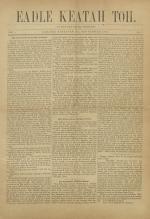
Page one opened with the discovery of a Cherokee tribe in the mountains of South Carolina and how they begged for teaches when the white travelers passed through their village. The Indian bow and white man musket were also compared on page one, with the bow being determined to be the superior weapon. It also described an Indian Buffalo hunt,…
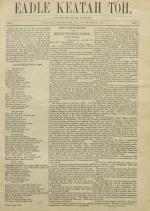
Page one had a report on the first year of operation of the Carlisle Industrial School, mentioning when students arrived, how many and where from. Also it described several trades the students were learning what how they were learning them. Page two had information about the Menomonee Agency and how more children were brought to Carlisle from…
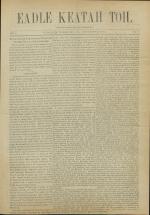
Page one started with an explanation for why boarding schools are necessary to successfully educate Indian children. It was explained that day school simply “do not withdraw the pupils from the influences of their home surroundings in such a manner us to facilitate a change in their habits of daily life.” Page two had a piece on the “Oklahoma…
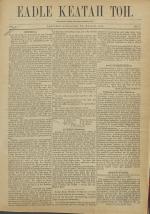
[Note: Although the front page gives the date of printing as March 1880, this issue came out in March 1881.]
Page one had a list of requests to the United States President from W. E. Dodge, Howard Crosby, John Hall, S. M. Moore, W m. C. Gray, S. It. Riggs, and T. M. Sinclair, making several requests, such as asking for titles to their…
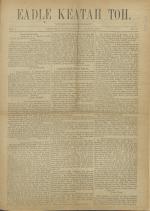
Page one opened with a letter to Carlisle from “An Old Soldier” who had been stationed at the Carlisle Barracks forty years earlier. There were also three other letters to residents of the school from Peter Primaux, Paul C.T., and Arizona Jackson. The rest of the page was one to two sentence long excerpts from letters from students. Page two…
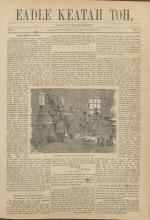
Page one opened with the methods and various uses of ground corn, from sweetening water, to making traveling bread. There was also a letter from Jno D. Miles, and another from Minerva Cheyenne. One article on creating competition between the Arapahoe and Cheyenne. Page two opened with the story of D.L. Payne, who used military force to remove…
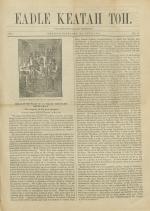
Page one opened with a piece titled “The Future of the Red Indian,” reprinted from the London Spectator. This interesting article begins with the author describing the activities of the Carlisle Indian School for a British audience before then discussing his reaction to seeing photographs from the school. The second page had the report…
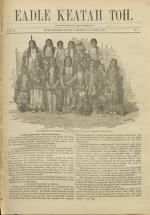
Page one opened with Lapi Oaye talking about the school system in America and how it is beneficial to Indian and while children alike. Page two had a bit on the humor of incorrectly spelled names, followed by an Article written by E.G.P. on increasing the time Indians spend in both office and school. Also on the page is a piece on an essay…
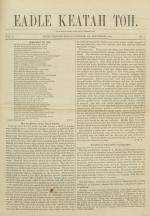
Page one opened with a poem by E.G.P. and the story of the Great Turtle, which was based on the arrival of a Spanish Ship. There was also a piece on the trouble that Billy Cornipachio faced, which included the opposition of his people to his education. Page two had a piece about visiting chiefs and on three former prisoners from Fort Marion in…
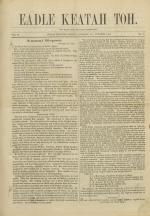
Page one opens with the Annual Report, followed by an article on School Room Work, which discussed learning English, musical instruction, and classroom examinations. Page two had “Wise Words for the Indians” by the President Garfield of Hampton Institute, Va. The main premise being that Labor must be free, and that Lab must simply be to form a…
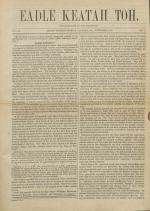
Page one opens with a discussion on the various types of Indian education, from day and boarding schools in Indian Territory to Boarding schools like Carlisle in the east. It also talked about the construction of new buildings on campus. Page two had more statistics on other Indian Schools. Page three had a letter from George (Kit-Ka-Hoc) La-Lu…
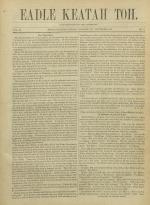
Page one had two articles, the first titled “The Pawnees” discussed the apparent lack of progress the Pawnee have shown in becoming civilized. The second, titled “A Glimpse of School Life,” described the daily lives of students at one of Bishop Hare’s Dakota Mission Schools. Page two had “Backward Glances”, which was about Indians not returning…
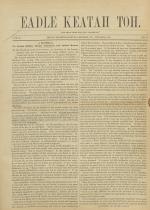
Page one had a single article on it, a memorial on Indian rights, education and homes. Page two had a continuation of the memorial and an article on Christmas. It talked about the food they ate in celebration and the decorations in the chapel. Page two also mentioned the death of Kate Ross (Wichita) at the Carlisle Barracks. Page three had the…
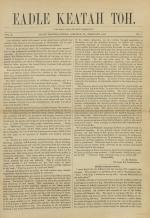
Page one had a letter to Capt. Richard H. Pratt on the methods followed in schools by Principal C. M. Semple. It also had an article titled “Indian Idiosyncrasies” about how Indians seem to have a better sense of direction than white people. Page two has the continuation of the previous article from page one, as well as “Wisconsin and it’s…
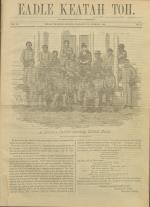
Page one has a large picture of Carlisle students in their school uniforms for Sunday School, as well as an extract from a letter written by Bishop Hare. Page two has “The Inspiration of the Work”, which writes about how white people have rescued Indians and helped them to not be lazy. There was also the article “Our Trade Boys” about the 185…
